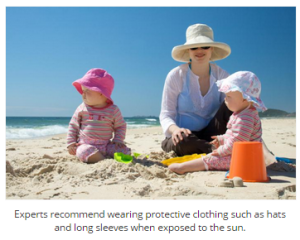
Dermatologists are specially trained doctors who diagnose and treat conditions of the skin, hair, nails and mucous membranes, such as the eyelids and the lining of the mouth. They see patients at every stage of life, from newborn infants to the elderly.
According to the American Academy of Dermatology (AAD), they deal with more than 3,000 different diseases, ranging from acne toskin cancer. They can also give aid and assistance with more cosmetic issues, helping patients to revitalize the appearance of their skin, hair and nails.1
The Centers for Disease Control and Prevention (CDC), report that in 2010, there were an estimated 39 million visits to nonfederal employed, office-based dermatologists in the US.2 There are approximately 700,000 practicing physicians in the US; of this number, an estimated 8,050-8,500 (1.2%) are dermatologists.3
In a 2012 survey of 29,025 physicians representing 25 different medical specialties, dermatologists were found to be the second happiest with their lives outside of work, behind physicians practicing rheumatology. Dermatologists reported an average happiness rating of 4.05 on a scale of 1-5, with 1 meaning “very unhappy” and 5 meaning “very happy.”4
Contents of article:
What is dermatology?5
Dermatology is an area of medicine concerned with the skin, keeping it healthy and treating the diseases that afflict it. This also incorporates the diagnosis, maintenance and treatment of diseases of the hair, nails and mucous membranes.
The skin is the largest organ of the body, covering a total area or around 20 square feet.6 It is the first line of defense against bacteria and injury, and often reflects the overall health of the body. A study conducted by the Mayo Clinic, published in 2013, reported that 42.7% of patients visited their doctors at some point due to a skin disorder.7
Disorders of the skin, hair, nails and mucous membranes are managed through investigations and therapies that include histopathology, immunotherapy, laser therapy, medication, phototherapy, radiotherapy and surgery (including cosmetic procedures).
Dermatologist qualifications1,8
To become a dermatologist in the US, candidates have to complete at least four separate steps. First and foremost, they must earn a college degree and go on to graduate from medical school, either becoming a medical doctor (MD) or doctor of osteopathic medicine (DO).
Following this, the doctor must complete an internship – the first year of medical training which can take place in hospitals and clinics. Dermatologists-to-be will commonly intern in an associated field, such as general surgery, internal medicine, family medicine, emergency medicine or pediatrics.
The doctor can enter into a dermatology residency program once they have completed their internship. They are then known as a dermatology resident and receive training in surgical procedures, diagnosis and treatment for the vast array of conditions that they will go on to face, all while seeing patients. Residency programs run for at least 3 years.
Once this is completed, dermatology board exams can be taken. These exams are now required to be taken every 10 years, reflecting the advances that are made within the specialty over time.
If a dermatologist wishes to specialize in a particular subspecialty of dermatology, such as cosmetic dermatology or Mohs surgery (a form of skin cancer treatment), they can continue their studies and take a fellowship, commencing extensive medical study into one particular area.
Some dermatologists may have the initials FAAD listed after their name. This stands for “Fellow of the American Academy of Dermatology.” The initials indicate the following:
- They are licensed to practice medicine
- They have passed exams given by either the American Board of Dermatology or the Royal College of Physicians and Surgeons of Canada
- They are a member of the AAD.
Common conditions treated5
Dermatologists need to have a vast wealth of clinical knowledge at their disposal, including knowledge of the basic sciences and all other medical specialties; many skin diseases are associated with internal conditions which they need to be aware of.
Even without being presented with conditions that could be categorized within other specialties, dermatologists have a great deal to contend with that specifically belongs to their field. Here are some examples of the more common conditions dermatologists treat:
Vitiligo is a condition in which the skin loses melanin, leading to the development of patches of lighter colored skin.
- Acne: a disease affecting the skin’s oil glands, acne is the most common skin condition in the US. It causes the formation of many different kinds ofpimples which can lead to depression, low self-esteem, and scarring. 9,10
- Dermatitis and eczema: inflammation of the skin, typically involving swelling with an itchy rash. Dermatitis comes in many different forms, including the atopic dermatitis – often referred to as eczema – contact dermatitis and seborrheic dermatitis.11,12
- Fungal infections: affecting the skin, nails, and hair, these infections are common and normally mild in effect. However, in people with weakened immune systems they can be more serious. A group of yeasts called candida can cause a wide range of infections, including oral thrush and balanitis.13,14
- Hair disorders: both males and females can experience hair loss. This can be due to an underlying condition or a stand alone one, such as hereditary hair loss – affecting 80 million men and women in the US – or a form of alopecia. The hair can also be affected by head lice – around 6-12 million children aged 3-12 years get head lice in the US every year.15-17
- Nail problems: nails often reflect the body’s overall health and conditions affecting them make up around 10% of all dermatological conditions. Approximately half of these are fungal infections, while ingrown nails are also common. Nail problems can be indicative of other underlying conditions.18,19
- Psoriasis: a chronic, autoimmune skin disorder that speeds up the growth of skin cells, resulting in thick red skin and silvery scales. There are several different types of psoriasis and sometimes it can be similar in appearance to eczema. As a result, it is important that a dermatologist makes the diagnosis.20,21
- Rosacea: a skin condition that causes redness in the face, akin to blushing or flushing. It often causes small, pus-filled bumps to appear, and can also lead to visible blood vessels and swollen eyelids. Rosacea can spread from the nose and cheeks to the forehead, chin, ears, chest and back, and is most often experienced by fair-skinned middle-aged women.22,23
- Skin cancer: each year, almost 5 million people receive treatment for skin cancer in the US. One in five Americans will develop a form of this disease at some point in their lifetime. The most common forms of skin cancer are basal cell carcinoma (BCC), melanoma, and squamous cell carcinoma (SCC). Most skin cancers can be treated if they are treated early.24,25
- Shingles (herpes zoster): a viral infection causing a painful rash. Although the condition clears without treatment after a few weeks, treatment is recommended to speed up recovery and to prevent long-lasting pain, numbness and itching after the disease has gone. Shingles can also potentially damage the eyes. 26,27
- Vitiligo: a condition whereby the skin loses melanin – the pigment that determines eye, hair and skin color. Vitiligotypically leads to the development of patches of lighter skin. Although there is no cure for the condition, treatments are available for the symptoms, such as mini skin grafts. The condition can have a strong social and psychological impact on patients that develop it.28,29
- Warts: contagious benign skin growths that appear when a virus infects the top layer of skin. Warts frequently go away without treatment, though dermatologists are also able to remove any that persist with a variety of different techniques to suit all patients.
Common procedures performed
Although many of the conditions seen by dermatologists can be treated with medication and therapy, there are still a wide range of procedures that these physicians can perform. Below is a list that includes some of the most common procedures that urologists perform, either in an outpatient or inpatient settings:
In dermabrasion, dermatologists use a high-speed rotating brush to surgically remove the very top layer of skin.
- Biopsies: skin biopsies are primarily carried out to diagnose or rule out certain skin conditions. There are three main types of skin biopsy that are commonly performed: shave biopsies remove small sections of the top layer of skin, punch biopsies remove small circular section including deeper layers, and excision biopsies remove entire areas of abnormal-looking skin.33,34
- Chemical peels: a chemical solution is applied to the skin. It causes a layer of skin to separate and peel off over the course of up to two weeks, leaving a layer of regenerated skin underneath that is typically smoother. Dermatologists can use this procedure to treat sun-damaged skin and some types of acne, as well as more cosmetic complaints, such as age spots and lines under the eyes.35,36
- Cosmetic injections: wrinkles, scarring and lost facial fullness can be temporarily treated with injections to diminish the signs of aging. Botulinum toxin therapy or fillers such as collagen and fat can be injected by dermatologists during office visits. Results of this treatment tend to last for a few months, and so injections need to be repeated periodically.37,38
- Cryotherapy: a quick and common form of treatment for many benign skin conditions such as warts. Skin lesions are frozen, often using liquid nitrogen, in order to destroy affected skin cells. Dermatologists can perform cryotherapy in their offices.39
- Dermabrasion: another procedure to change the appearance of the skin. Using a high-speed rotating brush, a dermatologist removes the top layer of skin, surgically sloughing scars, fine wrinkles, tattoos and potentially precancerous skin patches.40,41
- Excisions of lesions: skin lesions can be excised for several reasons; to prevent disease from spreading, for cosmetic reasons, to prevent repeat infection, to alleviate symptoms and for diagnosis. Depending on the size of the lesion, local or general anesthetic can be used to numb the area.42
- Hair removal and restoration: Hair loss can be treated with hair transplantation or surgery to the scalp. Unwanted body hair can be removed with laser hair epilation or electrolysis to destroy hair follicles. 43,44
- Laser surgery: dermatologists can use special light beams to remove a variety of skin complaints. These include and are not limited to tumors, warts, moles, tattoos, birthmarks, scars, wrinkles and unwanted hair.45
- Mohs surgery: a specific type of surgery for the treatment of skin cancer. Layers of skin are removed and examined under microscope in order to get rid of cancerous cells. Successive layers are removed until the surgeon is unable to find any cancer cells. Mohs surgery is only performed by Mohs surgeons – dermatologists who have completed specific additional medical training.46
- PUVA: an abbreviation of psoralen combined with ultraviolet A (UVA) treatment. Psoralen is a drug that is administered to make the skin more receptive to radiation treatment. PUVA is used to treat severe skin diseases such as psoriasis, dermatitis, and vitiligo.3,47
- Skin grafts and flaps: dermatologists can repair parts of the body where skin is missing, possibly due to other surgery or an injury, using skin from elsewhere on the body. Skin can either be grafted, using a free piece of tissue without its own blood supply, or a skin flap can be created from skin tissue adjacent to the area of skin loss.48
- Tumescent liposuction: Liposuction is the removal of excess fat from the body. Dermatologists typically use a process called tumescent liposuction to do this, whereby large volumes of local anesthetic are injected into the fatty tissue being removed. The tissue is then sucked out of the body. Tumescent liposuction should not be considered a treatment for obesity, rather a procedure for body contouring. The process can be aided further with the use of lasers to selectively melt fat and help remove tumescent fluid.49,50
- Vein therapy: superficial leg veins – also known as spider veins – are small, dilated surface veins that may look unsightly. Sclerotherapy is a minimally invasive procedure that is usually the preferred treatment for spider veins. Dermatologists insert either foam or a solution into the vein which irritates the lining and causes it to shut. The vein becomes less distinct or disappears completely.51,52
When to see a dermatologist1
Dermatologists should be consulted when the symptoms of a disease affecting the skin, hair, nails or mucous membranes appear. They can also be consulted if a patient has any concerns about the appearance of their skin, hair and nails – in this instance, a cosmetic dermatologist may be ideal.
Specific types of dermatologist should be sought for particular conditions. Cosmetic dermatologists specialize in treatment to improve appearances; dermatopathologists specialize in diagnosing disease of the skin, hair, and nails by examining samples under a microscope; and Mohs surgeons specialize in treating skin cancer with Mohs surgery.
Written by James McIntosh
http://www.medicalnewstoday.com/articles/286743.php
s
 Immunotherapy with natural signaling substance relieves skin condition.A three-character code brings relief to patients with psoriasis and sheds light on complex immunoregulation processes: IL-4, an abbreviation for the endogenous signaling molecule Interleukin 4. The substance’s ability to inhibitinflammation is well known, but its mechanism of action was not fully understood. Scientists from the Technische Universität München (TUM) and the University of Tübingen have now shown in an animal model and in a study on patients exactly how IL-4 helps against psoriasis at the molecular level and the important role it plays in our immune system.Inflammation is a defense strategy of the body against invaders. Increased amounts of blood and fluid flow into the infected areas, and the release of signaling molecules summon immune cells to the site of infection to effectively neutralize the pathogens. However, poorly coordinated or misdirected immune reactions can trigger inflammation even in the absence of external agents, thus causing undue tissue damage. This is the case in psoriasis and other autoimmune diseases, such as multiple sclerosis and rheumatoid arthritis.
Immunotherapy with natural signaling substance relieves skin condition.A three-character code brings relief to patients with psoriasis and sheds light on complex immunoregulation processes: IL-4, an abbreviation for the endogenous signaling molecule Interleukin 4. The substance’s ability to inhibitinflammation is well known, but its mechanism of action was not fully understood. Scientists from the Technische Universität München (TUM) and the University of Tübingen have now shown in an animal model and in a study on patients exactly how IL-4 helps against psoriasis at the molecular level and the important role it plays in our immune system.Inflammation is a defense strategy of the body against invaders. Increased amounts of blood and fluid flow into the infected areas, and the release of signaling molecules summon immune cells to the site of infection to effectively neutralize the pathogens. However, poorly coordinated or misdirected immune reactions can trigger inflammation even in the absence of external agents, thus causing undue tissue damage. This is the case in psoriasis and other autoimmune diseases, such as multiple sclerosis and rheumatoid arthritis.







